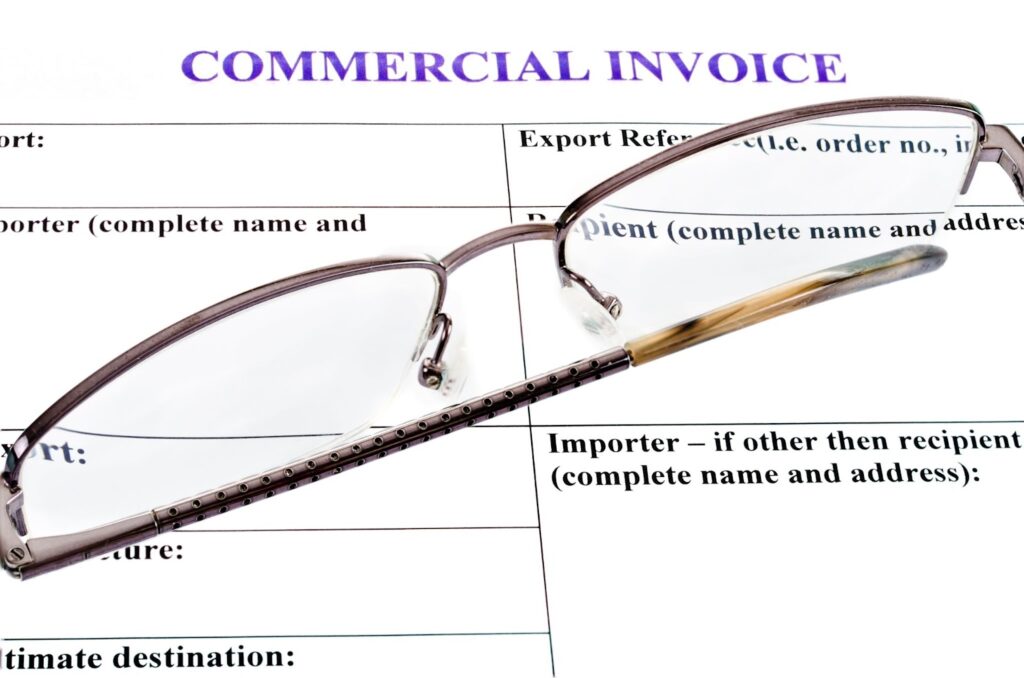

A commercial invoice is a customs-required document for any internationally sold shipment of goods. As a document, a commercial invoice plays an important role in facilitating the processing of products and owed taxes or duties. The following summary covers all you need to know about a commercial invoice and its role in international trade.
Commercial invoices are customs-required, international trade legal documents that:
To attain clearance for an import or export, a commercial invoice is presented to customs officials, who then assess the amount due in taxes. In a busy customs office, where thousands of parcels come through daily, the quicker officials can determine the details that pertain to a product, the smoother the system runs. To streamline filling out commercial invoices correctly, templates are available to help capture all the required information about a package or product.
A commercial invoice follows a proforma invoice. A proforma invoice is not an invoice but an estimate of what a product or package will cost and when a buyer can expect a shipment.
To create a compliant commercial invoice, most international shipping companies use commercial invoice templates that request specific information:
A commercial invoice is one of the most important documents in the import-export sales process. Logistical and legal ramifications are associated with an improperly filled-out commercial invoice template. A document that is missing information can result in a shipment delay. In most cases, the exporter, or seller, is held accountable for correcting the invoice.
While the idea between the two documents (Commercial Invoice and CN22/CN23 forms) is the same, the CN series forms require the seller to fill out more information about the contents of a shipment. The purpose is to help officials determine if the contents are allowed in the destination country and what company is accountable for tax, tariff, and duty payment.
These are terms commonly used regarding international trade, commercial invoices, and import and export requirements.
The Intermediate Consignee is the contact in a foreign country that serves as a delivery facilitator to the final purchasing party. This party could be a retailer or a designee by the purchaser authorized to pick up a shipped product.
The invoice number is the internal number on a template that helps tie the product to the shipping company.
The customer Purchase Order (PO) Number is for internal tracking by the buyer. A PO number is usually numeric or alpha-numeric and helps the buyer track the shipped products and product batches.
Currency Used is the payment currency used in the final cost of the product, including tax, tariff, and duty, if applicable. The transaction would not go through if a buyer tried to use an unapproved currency. Specifying the currency ensures that both buyer and seller get what they are paying to receive in terms of units, quality and value.
The Country of Origin is where the product originated. The Country of Origin designation does not have to be where the product was produced or manufactured.
The Reason for Export section on a commercial invoice covers why the product is shipping to the buyer (Repair, Gift, Sample, Personal Effects, Return, etc.) It is important because different classifications get processed under different procedures and protocols.
B/L/AWB stands for Bill of Lading and Air Waybill for tracking the purchased product on a commercial invoice template.
The Final Destination is the location where the products will ultimately ship.
The Export Route/Carrier section of the commercial invoice template lists the official corporate name of the company shipping the goods.
Terms of Sale, or Incoterms, on a commercial invoice contain any billing stipulations or requirements associated with the deal. The Terms section covers which party pays shipping costs, insurance amounts, import tax, duty charges, or, when applicable, tariffs.
The Terms of Payment section addresses how the shipment will be paid for, by whom, what amount, and the currency of the invoiced amount. The designated payer is not responsible for additional charges, although failure to pay might delay the order’s delivery.
The Terms of Freight on the invoice template indicate what party pays and the point of purchase status (prepaid or collect.)
Number of Packages
This section covers the number of units included in the delivery of goods.
The comments area of the template lets the seller add any other information about billing, payment, and proper delivery handling.
The Contents section on the template indicates specifically what is in the packaging.
This code is a number that helps to classify a product.
The value of a parcel indicates how much a unit costs, regardless of the sale price.
The Net Quantity is the total official amount of units in a parcel.
The Weight kg is the weight of the package in kilograms.
Freight is any unit or product that is shipped domestically or internationally.
This part of the template indicates how the shipment is insured.
The commercial invoice helps facilitate the delivery of an international package. It helps the buyer and seller and the people processing tax and shipping stipulations.